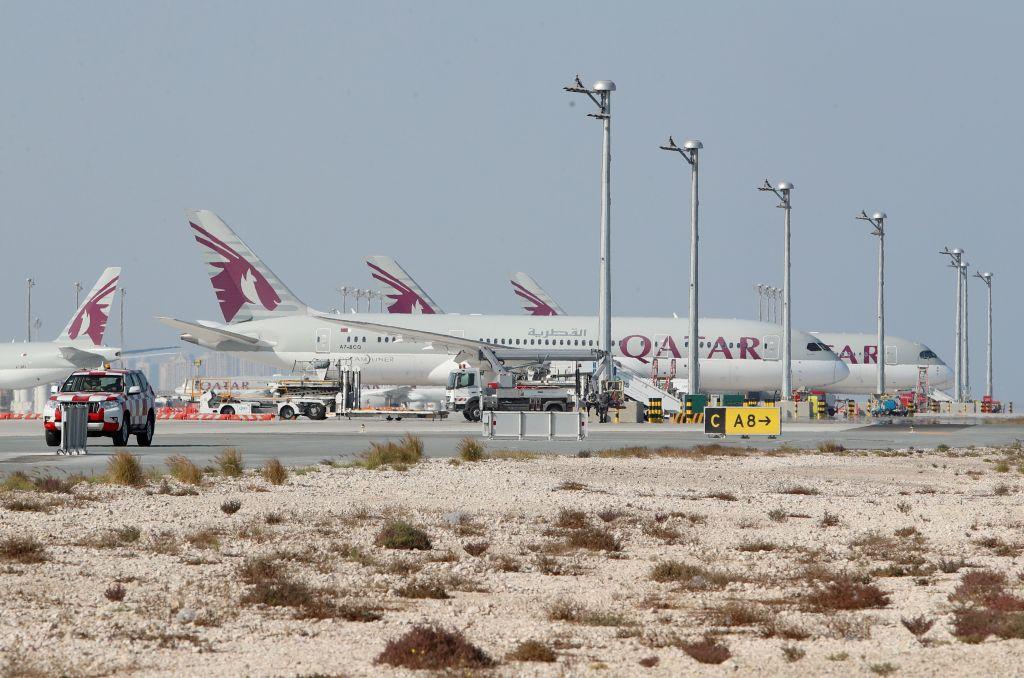
How many destinations does Qatar Airways now serve in Africa?
The number of destinations increased and the number of flights remains very flexible. Last year in September we had only 19 destinations in Africa; now with Abidjan we are up to 25.
It is a bit of a mix, there is the resumption of routes; a kind of a perfect storm resumption of Egypt, for example, related to the end of the blockade which makes a big difference.
The same for Khartoum in Sudan, those are restarts for us. But at the same time, we launched Accra in October last year. We start Abidjan from June 16 with a three-weekly tag to Accra, and we launched Abuja and Luanda—three brand new destinations that came online during the pandemic which Qatar Airways was not flying before.
At the same time we are re-evaluating other destinations like Windhoek and Gaberone. Both are very much tourism-driven, so maybe we will go back to Windhoek next season.
How does your fleet support this search for new destinations in a continent like Africa?
The fleet Qatar Airways operates to Africa is a mix of Airbus A320/350s and Boeing 787s. This variety of aircraft gives us availability to try new destinations with the support from cargo as well, which makes it so much easier for us to try new destinations.
Thanks to the belly hold of the 787s and A350s, a lot of the cost can be covered by the cargo and at the same time we are building up on the passenger side.
This also enables us to operate to secondary destinations. There are a many of them, like Juba in South Sudan. And again, we are flexible with the aircraft size where we can gear up from a 787 to A350, as we need to.
Can you estimate the potential number of destinations in Africa for Qatar Airways?
A big part of the Africa business is linked with our partner network, for example in southern Africa, like Zambia, Zimbabwe or Kinshasa in Congo, which is the most populated city in Africa for the next five years.
There is definitely an opportunity for points like that and the opening of the blockade now makes new routes easier.
For example, flights to Khartoum, Sudan, where we will save about two hours’ flying time per leg—that’s a massive difference. This is also the same for Lagos.
Then there are destinations which have never closed through the COVID-19 pandemic, for example Zanzibar, which has been a great destination for us, or the Seychelles.
We are definitely looking at other destinations in Africa as there is huge potential across the continent for new routes.
As many airlines looking for new markets to generate cash, do you think that more competitors, for example from Europe, will discover Africa as an opportunity?
Africa was underrated for years and there is a risk in maybe not understanding the continent.
North, south, west or east; the continent is so different and that does not make it easy to work.
Some do not realize how big the continent is and that’s a challenge for airlines which take European or US business models and try to replicate them in Africa—this just is not going to work, you cannot copy and paste like that.
When it comes to traffic rights, it is volatile and all about negotiations. Here in Doha we have a very involved aero-political team; some countries are more aware than others of the value that airlines bring to their market.
When airlines start flying into the country then they see the actual value that you can bring in.
You can really sell any destination. If you look, for example, on the market between Africa and the US, we offer probably the strongest O&D network. Not to forget the huge African diaspora all over the globe.
But flying out of Africa is not a Mallorca-type short-haul European route. In terms of Qatar Airways, we sell every destination we fly to.
To be successful in Africa, is it also about having the right partners? And what are the plans for a strategic investment in Rwandair?
We have an interline agreement with Air Côte d'Ivoire, which is important because we do not have that reach in West Africa.
We have interlines with many of the airlines all over Africa. Our codeshare with Royal Air Maroc, for example.
I want someone sitting in the smallest place, able to book a ticket to get to one of our African gateways.
Look at the city of Hargeisa, Somaliland, for example. A small destination with a lot of development going on.
I want to have us connected like a spider network across the continent and this is what we are working on.
Regarding Rwandair, that is still under negotiation. We are also talking with Comair in South Africa as a partner. We are definitely establishing deeper partnerships with key partners around the continent going forward.
Are there still routes where good yields will be generated?
When we look for example to the big oil and gas companies, they are very much focused on safety and reliability.
We see for example a kind of regular traffic from Luanda in Angola to Johannesburg in South Africa via Doha. Or from Algiers to Liberia via Doha.
They send some employees on a 20-hour trip and make sure they arrive at the destination safe, instead of taking the chance on an unreliable carrier for a much shorter flight.
You find some interesting routings in Africa, it is always about adding and adapting. Every market is unique and challenging.
Main photo credit: Karim Jaafar / AFP / Getty Images
Portrait credit: Qatar Airways
